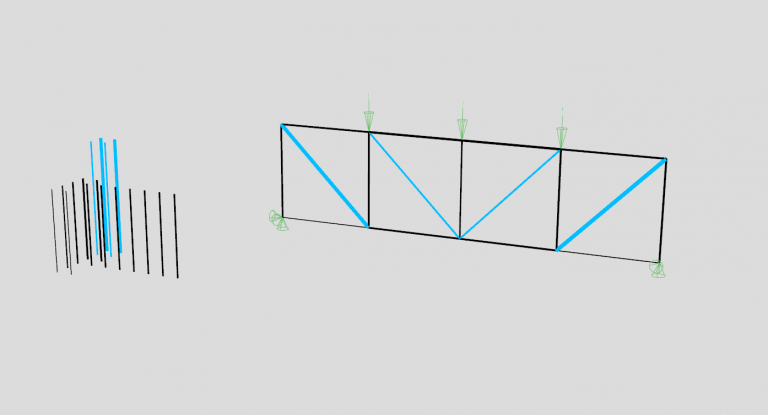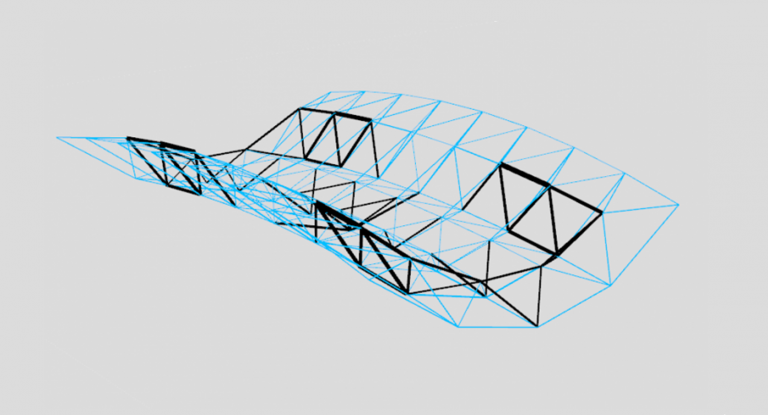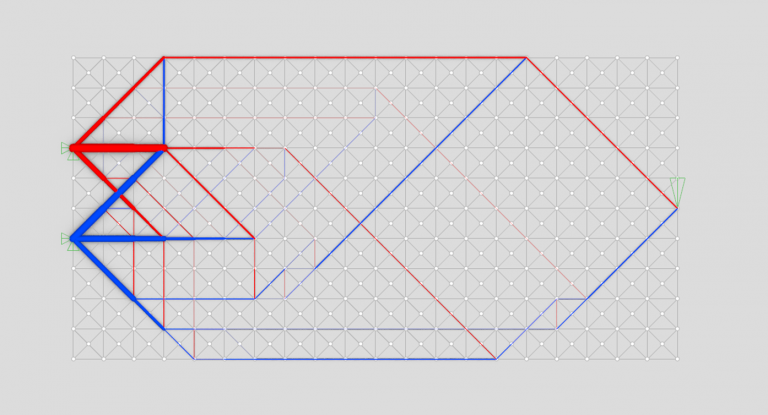Phoenix3D

Banner Phoenix3D
Download
The tool is a plugin for Grasshopper3D, the interactive parametric environment within Rhino3D, a 3D modelling software widely used in architecture and structural design firms. The plugin is available via the PackageManager of Rhino3D. It is also available for download on Food4Rhino.
Installation
To install the plugin just search for “Phoenix3D” inside the PackageManager of Rhino3D. Then press the install button and re-launch Rhino. You’re all set up, enjoy!
Principle

Designing with reclaimed components swaps the conventional structural design process: rather than manufacturing components based on a preliminary design of the full structural system, the geometry and topology of the structural system is constrained by the availability of reused components. Hence the plugin demands the prior definition of two element stocks, one with the characteristics of elements that are available for reuse and the other with the characteristics of new elements regularly available on the market. The choice between both stocks when assigning the elements onto a predefined base structure is then processed through Best-Fit heuristics, allowing for the minimization of adverse environmental impacts or other objectives. The result is a structure whose topology and geometry is optimized for reusing the given stock of elements.
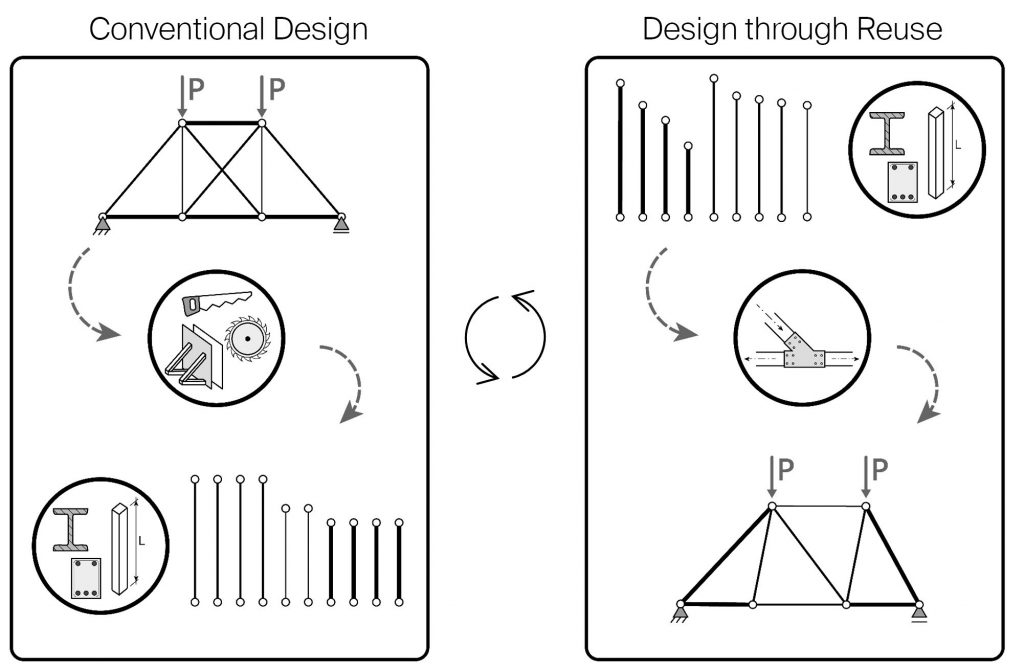
Tutorials
File examples
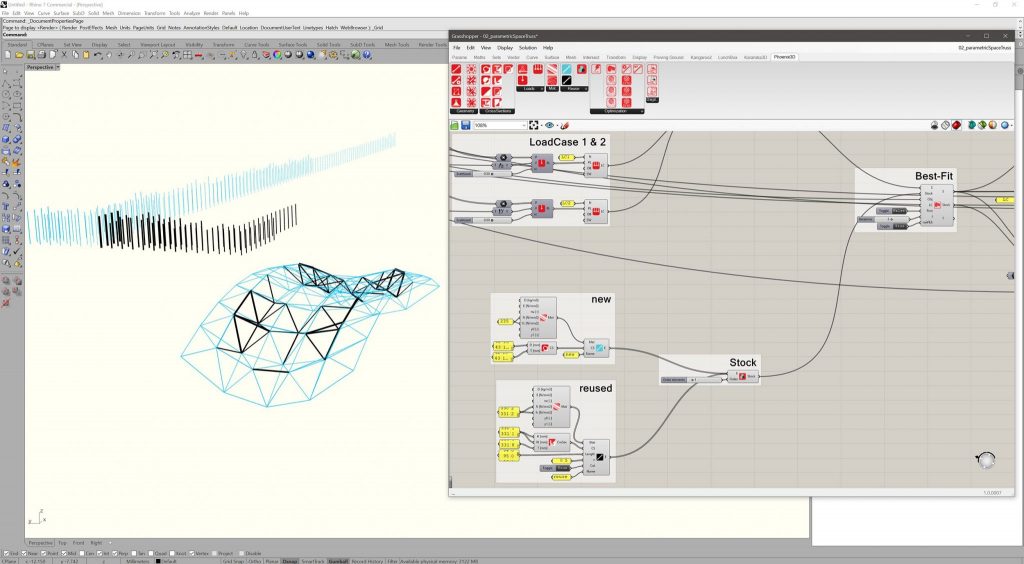
How to reference the tool
“Phoenix3D”, J. Warmuth, J. Brütting, C. Fivet, EPFL, 2021 (http://sxl.epfl.ch/Phoenix3D)
About the authors
The plugin is a product of the Structural Xploration Lab, EPFL. It is developed and coded by Jonas Warmuth & Jan Brütting following research results from Jan Brütting’s PhD thesis.
About the name
The phoenix is the immortal bird arising from the ashes of its predecessor. No other animal symbolizes better the extension of service lifespans of structural components through their reuse in new buildings.
Related publications
- Computational Tool for Stock-Constrained Design of Structures
IASS Symposium, 2021 (detailed record) - Design of Truss Structures Through Reuse
Structures, 2019 (detailed record)
